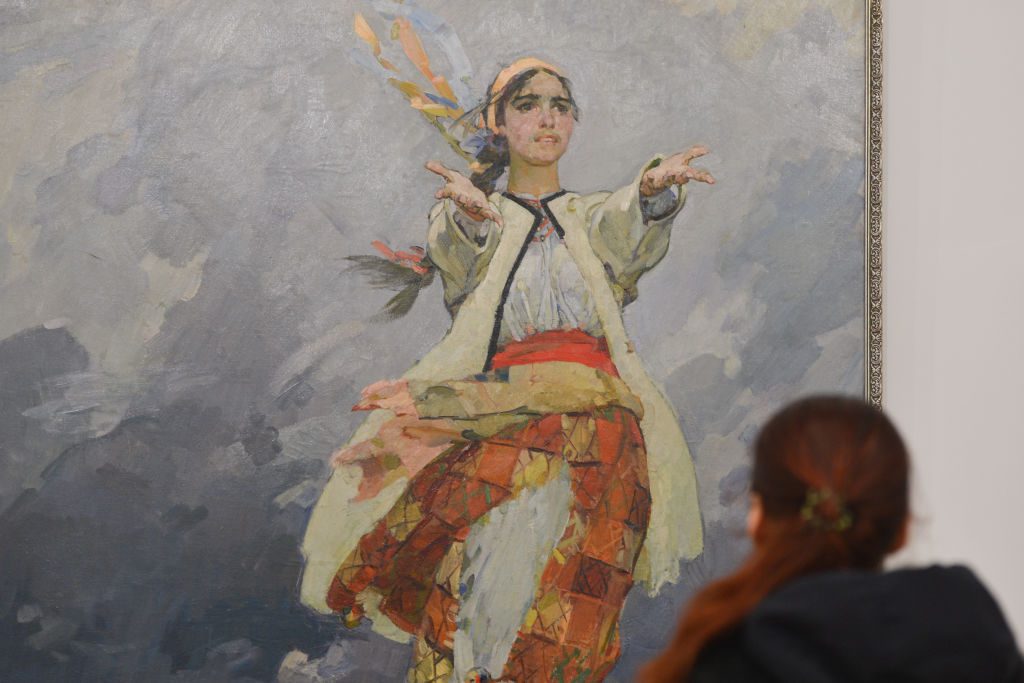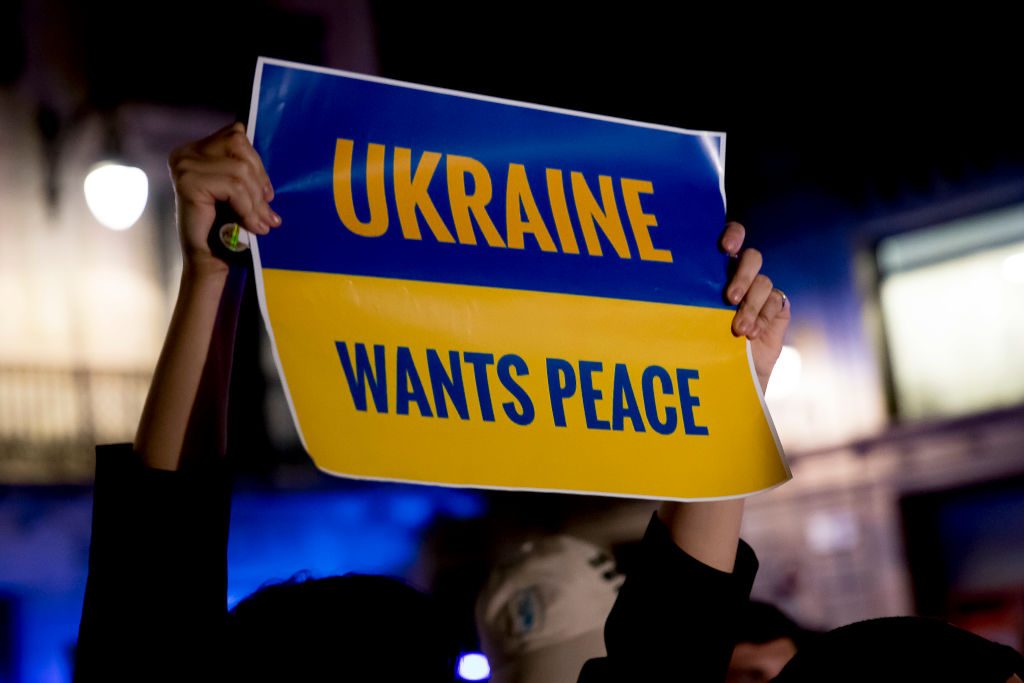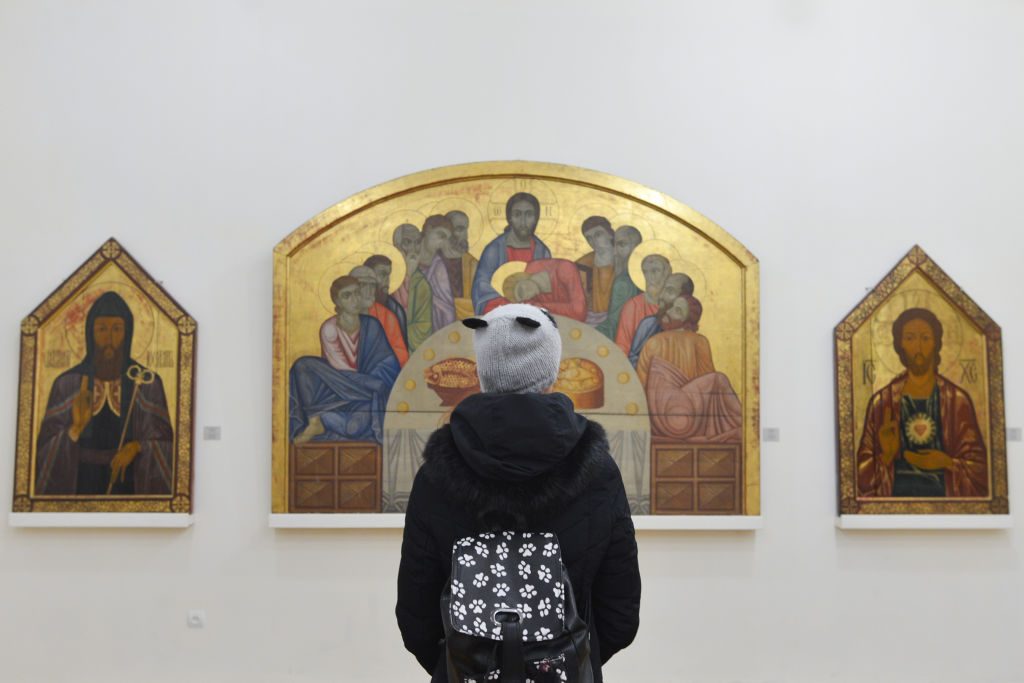Museums & Institutions
Hiding Art in Basements, Returning Loans, Reopening as Bomb Shelters: How Ukraine’s Museums Are Handling the Russian Invasion
One art center near the Polish border opened its doors for those who have fled the conflict zone.

One art center near the Polish border opened its doors for those who have fled the conflict zone.

Sarah Cascone

As Ukraine defends itself against invading Russian forces, the nation’s museums find themselves in a dire situation, charged with protecting the nation’s art and culture in a time of crisis. As events on the ground change rapidly, it remains to be seen how institutions will fare and what will become of Ukraine’s rich cultural heritage.
While many Ukrainians have become refugees, leaving roads clogged with traffic as residents flee the country, museum employees are are doing their best to look out for their collections—whether that means transporting objects abroad, secreting them away into basements and other secure locations, or just beefing up on-the-ground security.
Moving collections out of the country is complicated by the fact that state museums need government permission to do so, and filing such paperwork can take time. Kyiv’s Museum of Freedom, which was founded in 2014 to memorialize the nation’s pro-democracy movement, had applied for such permission as tensions with Russia mounted, but still hadn’t been approved to act when the invasion began and is now working to find secure storage facilities within the city.
“Our museum is evidence of Ukraine’s fight for freedom,” director Ihor Poshyvailo told the New York Times. “Of course I’m fearful.”

Hundreds of citizens of Ukrainian origin demonstrate in Barcelona against the war between Russia and Ukraine, in Barcelona, Catalonia, Spain, on February 25, 2022. (Photo by Albert Llop/NurPhoto via Getty Images)
The Museum of Freedom is just one of thousands of institutions in the city, all of which are now under threat. At the National Museum of the History of Ukraine, also in Kyiv, workers spent 12 hours on Thursday moving objects into storage, while six hours south on the Black Sea, the Odessa Fine Arts Museum put up barbed wire and hid art in the basement.
The museum posted a Ukrainian flag and dove emoji on Instagram under the hashtag #PeaceForUkraine yesterday, warning that the space was closed and for everyone to “keep your eyes and ears open.”
International museums have also scrambled to recall loans to Ukraine, like artifacts related to Russia’s 2014 annexation of Crimea that had been touring the country in an exhibition organized by the War Childhood Museum in Bosnia and Herzegovina. Some 40 objects left Ukraine last week, but over 300 remain in Kyiv.
Olesia Ostrovska-Liuta, director general of Kyiv’s Mystetskyi Arsenal National Culture, Arts and Museum Complex, responded to Russian President Vladimir Putin’s announcement of the invasion by implementing the museum’s safety plan and writing a letter calling for international support against Russian aggression. (She also wrote an Artnet News op-ed about what the art world could do.) As Ostrovska-Liuta proofread the missive, “there was an air defense warning” and she was forced to take cover in a bomb shelter, she told the Art Newspaper.

A view of Ukrainian Sacred Art inside Sheptytskyy Historical Museum in Lviv.
(Photo by Artur Widak/NurPhoto via Getty Images)
“We should be preparing now the ‘Book Arsenal’ to be held in May, exhibitions, and cross-sectoral projects—instead, our team focuses the efforts to ensure the safety of our staff, our families, as well as to guard our collection,” the organization wrote on Instagram. “By escalating their eight-year-long aggression with these horrid and disgusting actions against Ukraine, by invading the territory of Ukraine, Russia is attacking the basic, fundamental principles of international peace and security, the pillars of the UN, the very existence of the Ukrainian state.”
Seven hours west of the capital, near the Polish border, the Lviv Municipal Art Center has opened its doors for those who have fled the war zone, “transforming into a place of temporary respite for displaced people and for all those who require psychological calm,” according to an Instagram post. The institution has coffee, tea, cookies, and cats, and will help refugees find temporary lodging in the city by putting them in touch with representatives of the district council.
The nation is also home to seven UNESCO World Heritage Sites. The organization issued a statement calling on Russia to respect the “1954 Hague Convention for the Protection of Cultural Property in the Event of Armed Conflict and its two (1954 and 1999) Protocols, to ensure the prevention of damage to cultural heritage in all its forms.”
The Museum Watch Committee, a branch of CIMAM (the International Committee for Museums and Collections of Modern Art), has also contacted member organizations in Ukraine to offer practical support.
The new armed conflicted follows the 2014 Maidan Revolution overthrowing President Viktor Yanukovych, which eventually led to the annexation of Crimea and two separatist military groups establishing the Donetsk People’s Republic and Luhansk People’s Republic.
During the 2014 revolution, staff didn’t leave Kyiv’s National Art Museum for days, and were relieved when a Molotov cocktail that smashed through the roof didn’t explode, reported the Wall Street Journal.
The situation was more dire in Donetsk, where the Donetsk Regional Museum of Local History lost 30 percent of its collection and was struck by antitank missiles 15 times. The Izolyatsia Center for Cultural Initiatives was seized by Donetsk rebels, who looted the collection and detonated a large-scale public artwork. It now operates out of Kyiv.